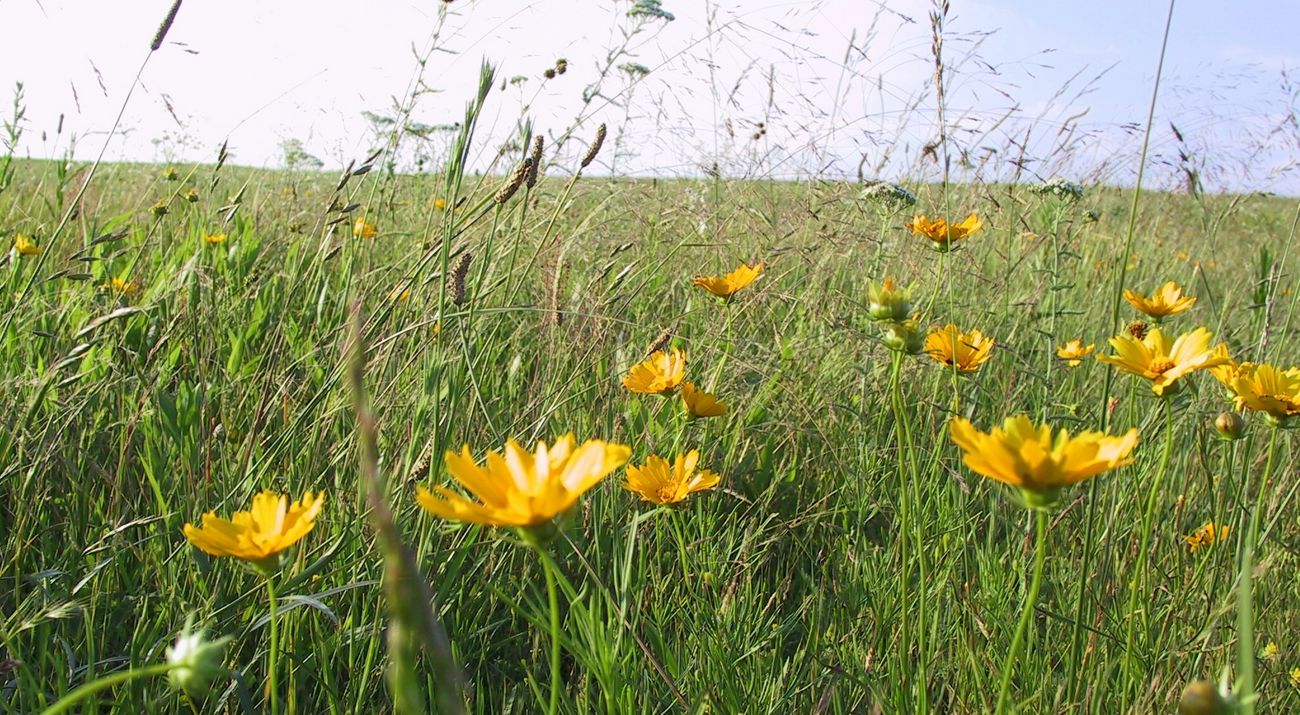Description
Wah’Kon-Tah Prairie is a designated special focus area in which the Conservancy is working diligently to restore native grasslands. This beautiful and open expanse of prairie is often dotted with wildflowers and other rare plants and animals.
The federally endangered American Burying Beetle was reintroduced at Wah'Kon-Tah Prairie in 2012. The planned reintroduction is the result of partnerships with the Saint Louis Zoo's Center for American Burying Beetle Conservation and the U.S. Fish and Wildlife Service.
Why You Should Visit
Named in honor of the Osage people who formerly resided in this region, Wah'Kon-Tah means "great spirit". Here, male greater prairie chickens perform mating rituals on age-old dancing grounds called leks. Regal fritillary butterflies sip nectar from prairie flowers. The rare prairie mole cricket trumpets his courtship call in the spring twilight. Upland plovers, Henslow's sparrows and scissor-tailed flycatchers grace the airways. Deer, coyotes, fox, and the eastern cottontail forage among the asters, goldenrods, gentians, coneflowers, big bluestem and little bluestem.
Limited hunting is allowed; contact the St. Louis office for additional information at (314) 968-1105 or email missouri@tnc.org.
Conditions
The preserve is a tallgrass prairie, with 3'-4' tall grasses from late summer through fall. Gently rolling hills make for a moderate hike. Summer is often very hot, with little shade.
Why TNC Selected This Site
The Nature Conservancy and its key partner, the Missouri Department of Conservation, are committed to recovering and maintaining viable occurrences of all of the natural communities and their component plants and animals at Wah'Kon-Tah, as well as the natural processes upon which they are dependent. Wah' Kon-Tah is one of the last functional prairie landscapes in the Osage Plains.
What TNC Has Done/Is Doing
In the 1970s, TNC purchased the first two tracts (640 acres), with funds provided by Ms. Katharine Ordway, land conservationist and heir to the 3M fortune. An acquisition in 1998 of 872 acres connected two prairie conservation areas, expanding Wah'Kon-Tah to 2,331 acres. This acquisition provided the critical mass necessary to begin large-scale recovery of tallgrass prairie.
In late 2001, a transaction that included the acquisition of a 1,266-acre tract and the protection of 660 acres through a conservation easement, expanded the native grassland recovery effort at Wah'Kon-Tah. Subsequent transactions resulted in the current acreage under protection.
Currently, The Nature Conservancy and Missouri Department of Conservation are working in partnership to meet aggressive habitat restoration needs, including exotic species control, fire management, woody vegetation reduction, prairie restoration and a native seed co-op.
